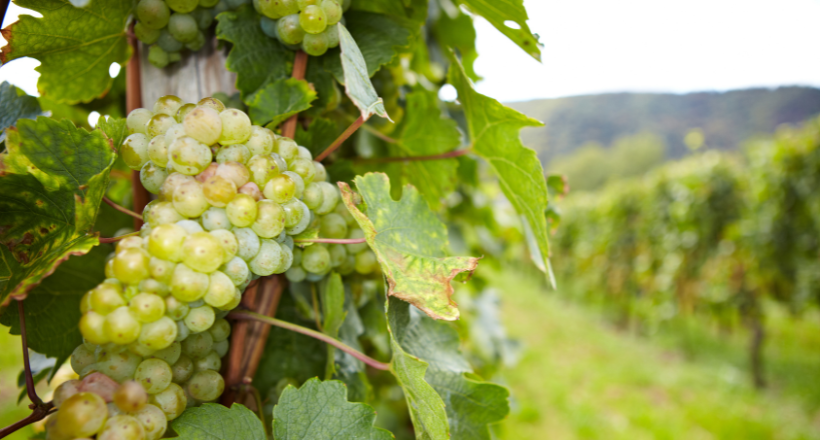Riesling
Wine 1:
Maison Trimbach Frederic Emile Riesling 2018 - 14% ABV
Region: Alsace, France
Alsace, France is located in the rain shadow of the nearby Vosges Mountains, meaning that this region experiences a long, warm growing season. The grapes for this wine were harvested from a single plot, of vines planted on south facing slopes, further increasing the amount of heat and sunshine the grapes received. This, along with an exceptionally hot and dry Summer in 2018, resulted in grapes with a very high level of sugar when harvested, and a relatively high ABV in the wine after it was fermented to dryness. The wines were fermented and stored in stainless steel tanks, and did not undergo malolactice conversion or lees aging, allowing for the primary fruit and floral aromas from the grapes to be preserved.
Wine 2:
Dr. H. Thanisch (Erben Müller-Burggraef) Berncasteler Doctor Riesling Kabinett 2019 - 9% ABV
Region: Mosel Valley, Germany
The Mosel Valley of Germany is arguably the most well known region for Riesling in the world, with the cooler temperatures and slate soils providing a perfect environment for Riesling grapes. The grapes for this wine were planted on south facing slopes, in the Bernkasteler Doctor vineyard, and the vines are up to 100 years old, producing grapes with concentrated levels of acid and sugar. The wine was fermented using ambient yeast over the course of 5 months, and the wine was aged on the lees for several months to improve its complexity and texture.
Riesling is an aromatic white grape, prized for its vivid acidity and crystal-clear expression of place. It is grown around the world, but is best known from Germany, France, Australia, and New York. Wines made from the Riesling grape can span a wide range of style, from bone-dry, austere, and citrus-charged to luscious and sweet, often showing lime, green apple, peach, and jasmine aromas and flavors.The Riesling grape is cold hardy and late-budding, meaning that is able to thrive in cool climates, especially when planted in slate or limestone soils. Riesling wines can age beautifully for decades, often developing a distinctive “petrol” or gasoline note, as well as more common aromas and flavors of honey and marmalade.
Both wines presented in this blind tasting feature the expected aromas and flavors of apple, citrus, and peach, however the primary difference between these two wines is the sweetness level. The Trimbach Riesling was fermented to dryness, meaning that there is only .7 g/L of sugar remaining in the wine after fermentation completed, as opposed to the Dr. Thanisch Riesling, which contains 81.7 g/L of residual sugar. This high level of sugar in the Dr. Thanisch Riesling is balanced by the naturally high level of acidity that Riesling grapes possess, meaning that the wine tastes refreshing and balanced despite the increased sweetness and body from the residual sugar.


